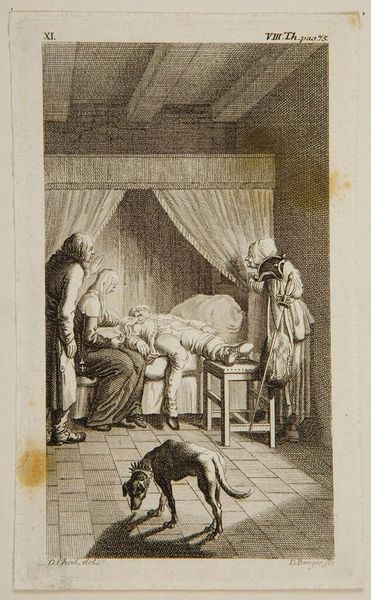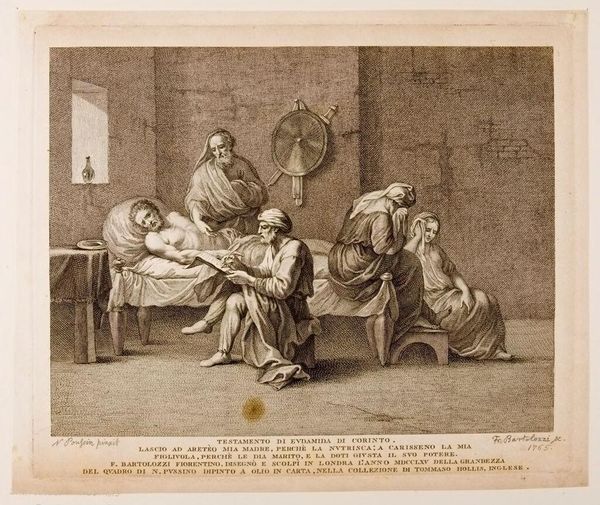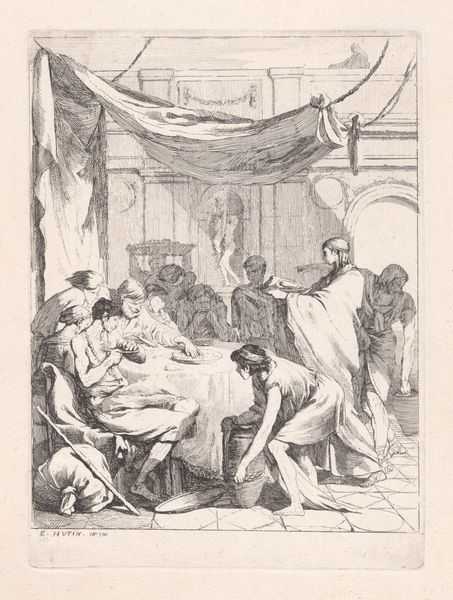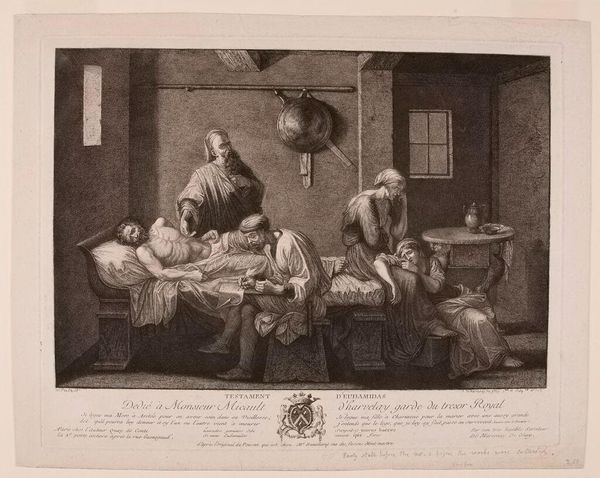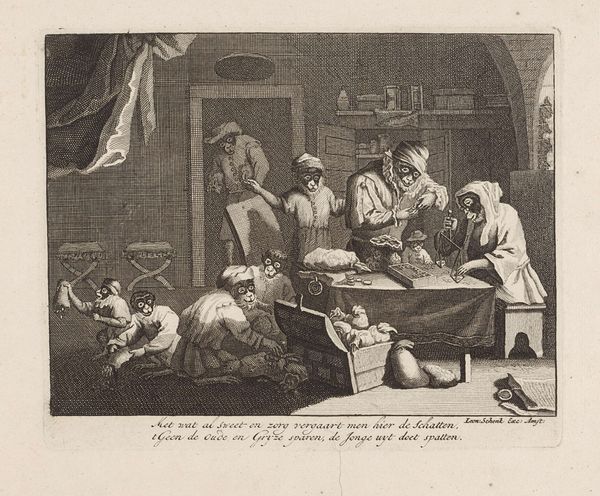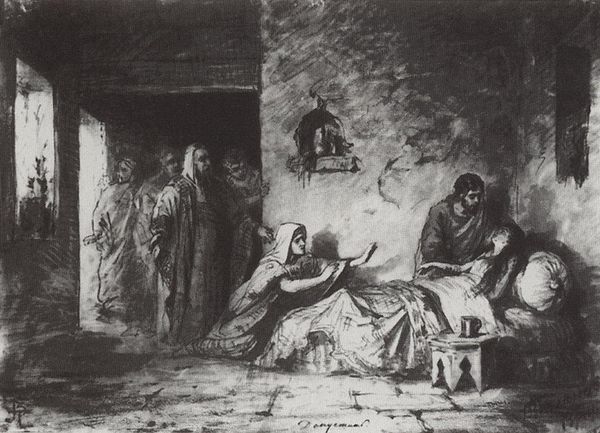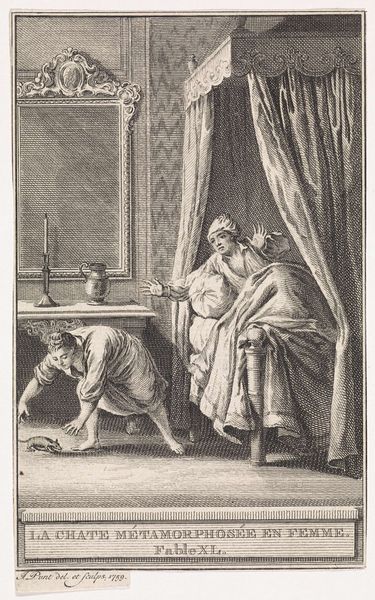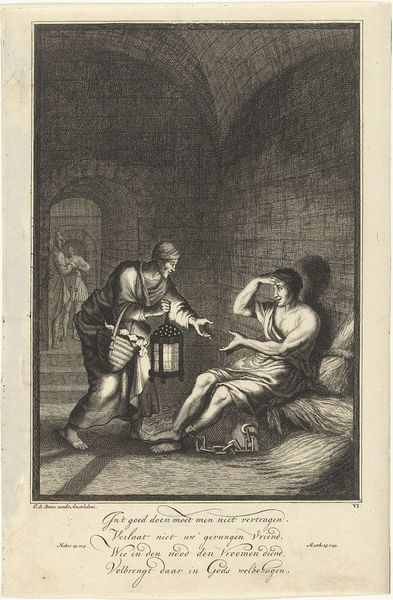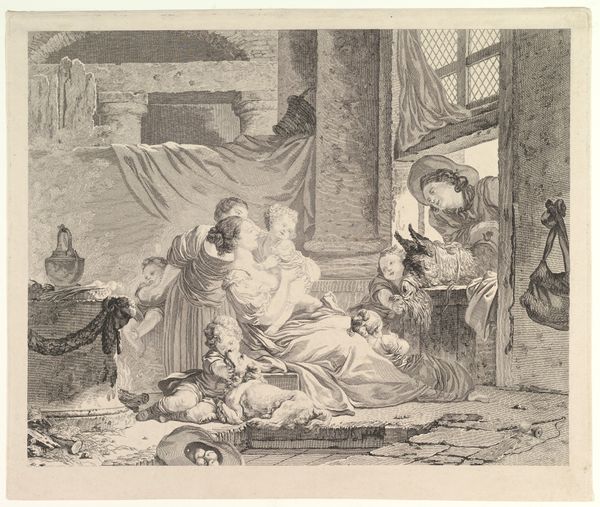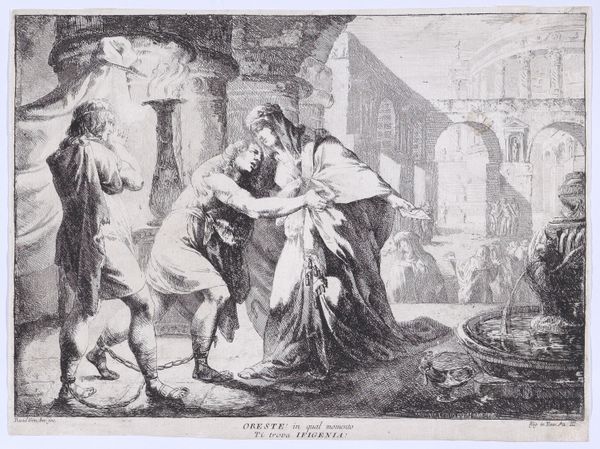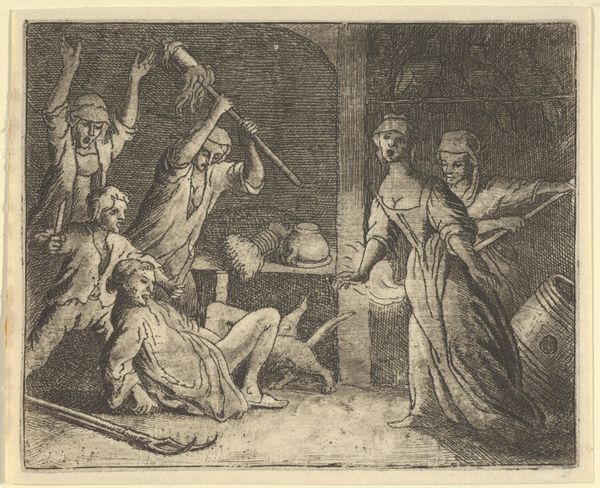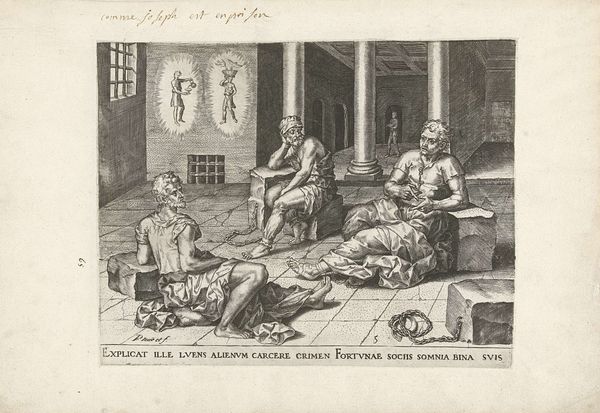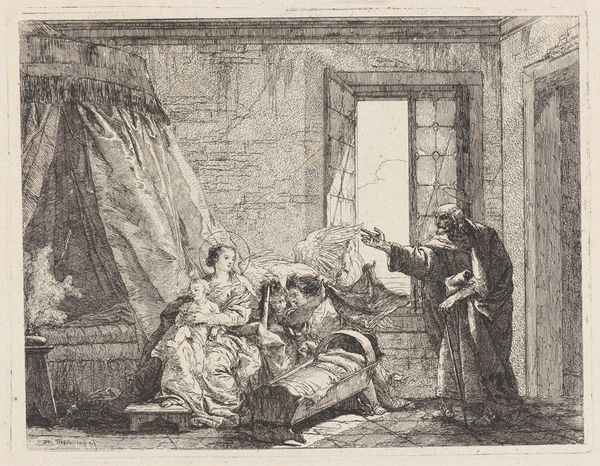
drawing, print, engraving
#
drawing
#
neoclacissism
#
narrative-art
# print
#
figuration
#
history-painting
#
academic-art
#
engraving
Dimensions: 5 3/8 x 8 1/4 in. (13.7 x 20.9 cm)
Copyright: Public Domain
Editor: This is Pierre Peyron's "Les funérailles de Miltiade," made between 1755 and 1814. It's an engraving, currently residing at the Metropolitan Museum of Art. It strikes me as very somber; the scene depicts what appears to be a funeral in a rather stark setting. What symbols or underlying narratives do you perceive in this piece? Curator: The pallid figures immediately catch my eye, Editor. Their drained color contributes to the somber mood. Notice the shield inscribed with 'Marathon' looming above the body, acting as a visual signifier of Miltiades's victory, yet it’s now a funereal object, isn’t it? It serves as a powerful reminder of both glory and the ephemeral nature of human life. Editor: I hadn't considered the shield's role that deeply. So, the artist is contrasting Miltiades’ achievements with his present state? Curator: Precisely. Consider also the chains visible in the lower portion of the engraving. They hint at confinement and, metaphorically, the constraints even heroes ultimately face – mortality, perhaps disgrace, since Miltiades died in prison. Does the artist perhaps suggest a meditation on heroism, fate, and civic duty through this visual language? Editor: That’s a fascinating way to look at it. The chains give another dimension. It's as though even in death, Miltiades isn’t entirely free. Curator: And isn’t that often how cultural memory works? We chain figures to our narratives, for better or worse. What emotions does that spark in you? Editor: It definitely brings the image to life and contextualizes its significance, creating layers of meaning I hadn't noticed before. Thanks for highlighting that! Curator: My pleasure, Editor. Art becomes resonant when we delve into its symbolic language and connect it to the larger human story. It encourages one to reflect not just on Miltiades but what we culturally remember, why and how we depict heroism.
Comments
No comments
Be the first to comment and join the conversation on the ultimate creative platform.
